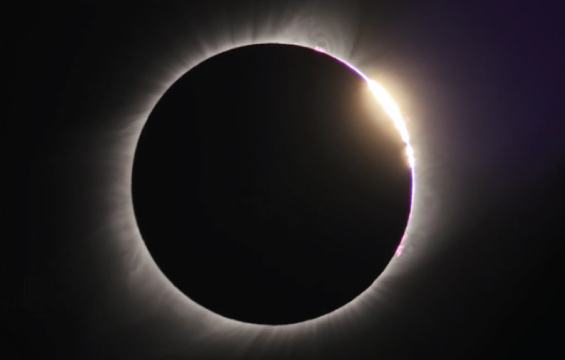Additional Eclipse Resources

Learn more about the science of solar eclipses
Total solar eclipses offer scientists a unique opportunity to study the Sun. During totality, the solar corona—the outermost region of the Sun’s atmosphere—becomes visible. It appears as a ring around the Sun.
Solar eclipses have many other interesting effects, from 360-degree sunsets sprawling to “Baily’s beads” caused by mountains on the Moon.
Explore more solar eclipse science with videos from our team at the Science Centre. Plus, check out our list of activities for hands-on eclipse fun you can try at home!
Learn more with these videos
Did you know that sunset colours appear across the entire horizon during a solar eclipse? Find out why!
Some animals behave differently than usual during total solar eclipses. Why do you think this is?
Discover the fascinating visual phenomenon caused by the Moon’s small but mighty mountains.
The Moon is on the move! Explore the connection between the Moon’s location and solar eclipses on Earth.
Try these hands-on eclipse activities
There is so much more solar eclipse science to explore! Use the Science Centre’s Solar Eclipse Log to record your observations throughout the eclipse.
Plus, make a model, run a demo or try another of these engaging activities from the experts at NASA:
- Modeling meaningful eclipses
- Experimenting with UV-sensitive beads
- Eclipse chalk art
- Solar eclipse beach ball demonstration
- Modeling eclipses lab
Explore citizen science
Science is everywhere, and research can happen anywhere! Check out these citizen science research projects about eclipses and learn how you can contribute:
Explore more space science
Check out our exciting line-up of astronomy events, IMAX® films and more when planning your next visit to the Science Centre!
Plus, learn what causes eclipses and how you can safely view an eclipse from wherever you are in the world.